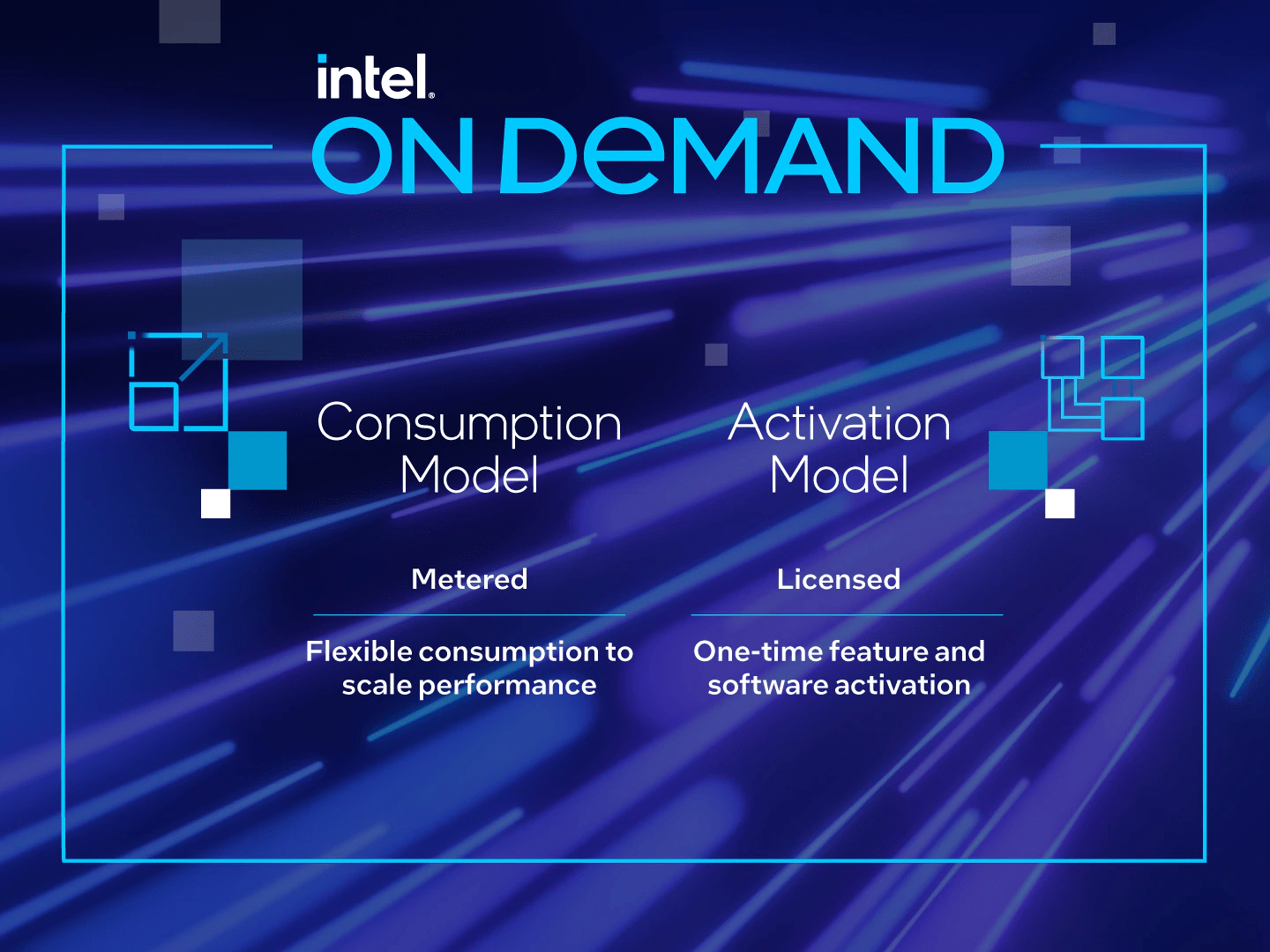Together with the server processors Xeon and Xeon Max, Intel On Demand should make it possible to unlock CPU features even after purchase, which should provide more flexibility. Intel offers the activation of selected features and security functions for Sapphire Rapids via an activation model.
With the 4th generation of Intel Xeon Scalable processors, the Intel On-Demand Model that allows certain additional accelerator and security functions to be activated later, officially introduced. In this way, for example, the Intel Quick Assist Technology (QAT), a technology that was previously reserved for certain specific Xeon processors, can be unlocked even after purchasing the actual hardware.
 < /figure>
< /figure>

Intel On Demand for Xeon processors (“Intel Sapphire Rapids”) (Image: Intel)
Intel offers the subsequent activation of selected accelerators and security functions via the so-called Activation Model:
- Intel Software Guard Extensions< /li>
- Intel Data Streaming Accelerator
- Intel Quick Assist Technology (QAT)
- Intel Dynamic Load Balancer
- Intel In-Memory Analytics Accelerator
- Intel Data Streaming Accelerator
Not the first upgrade experiment
This invention is not entirely new, as early as 2010 the in-house entry-level processors, such as the Pentium G6951 to the Pentium G6952, were upgraded with more cache and Hyper-Threading. The following year four processors followed with a similar procedure, this time it was the turn of the two series Pentium and Intel Core i3 in the desktop and notebook, where, among other things, the graphics unit integrated in the CPU could be upgraded.
 Intel On Demand for Xeon processors (“Intel Sapphire Rapids”) (Image: Intel)
Intel On Demand for Xeon processors (“Intel Sapphire Rapids”) (Image: Intel)However, after it was quiet for a long time about the subsequent CPU upgrades, the manufacturer announced them again with Intel Software Defined Silicon (SDSi) in September 2021 and is now officially reintroducing them under a new name.
< p class="p text-width">This time, however, Intel has chosen the Xeon and Xeon Max product families for professional users and companies as the first solution, and is thus taking a completely different approach than it was a decade ago.
In the cloud environment, Intel also enables as-a-service offers for Intel On Demand via the so-called Consumption Model and selected providers such as Lenovo, HPE and Supermicro. With Linux 5.18, the driver for Intel Software Defined Silicon (SDSi) was also officially integrated into the free operating system kernel.
Prices and payment model still unknown< /h2>
Regarding the pricing of Intel On Demand, the presentation of the new Xeon processors on January 10, 2023 will probably bring more clarity. So far, Intel has been silent on this topic, especially the pricing compared to regular models and CPUs, which do not offer the features mentioned at all, should be interesting. Criticism is likely to come quickly here, however, because AMD always plans its Epyc processors with all features and no gradation.
The project page on the GitHub developer platform provides further information .